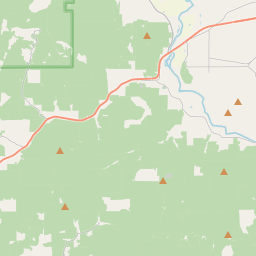Wilderville Post Office
Historical marker location:






1775: The Second Continental Congress establishes the Constitutional Post to provide postal services in the thirteen American colonies. Benjamin Franklin is appointed as the first Postmaster General.
1792: The Postal Service Act is passed, officially establishing the United States Postal Service as a federal agency. It sets the foundation for the organization and regulation of postal operations.
1847: The introduction of prepaid adhesive postage stamps revolutionizes mail delivery, simplifying the process and promoting efficiency.
1860: The Pony Express, a fast mail delivery service, is launched to transport mail between the eastern and western regions of the United States. It becomes famous for its daring riders and swift delivery.
1863: Free city delivery is introduced, allowing mail to be delivered directly to urban households and businesses rather than being picked up from local post offices.
1864: The Postal Money Order system is established, providing a secure way for people to send money through the mail.
1896: Rural Free Delivery (RFD) is implemented, bringing mail delivery to rural areas for the first time. This service significantly improves communication and connects rural communities to the rest of the country.
1971: The United States Postal Service is reorganized as an independent agency within the federal government, operating as the USPS. It is no longer directly controlled by the Postmaster General.
1974: The USPS introduces the ZIP (Zone Improvement Plan) Code system, which assigns unique codes to geographic areas to improve mail sorting and delivery efficiency.
1997: The USPS launches its website, usps.com, providing online access to postal services, tracking, and information.
2001: Following the 9/11 terrorist attacks, the USPS faces security challenges and undergoes significant changes to enhance mail screening and protection.
2013: The USPS announces the end of Saturday mail delivery for regular letters and reduces delivery to five days a week.
Present: The USPS continues to be a vital service, handling billions of pieces of mail annually and adapting to changes in technology, communication, and the shipping industry. It plays a crucial role in connecting people, facilitating commerce, and serving as a backbone of the American communication infrastructure.
This timeline provides an overview of key milestones in the history of the USPS, which has played a crucial role in facilitating communication and connecting communities throughout the United States for over two centuries.
Oregon was the first state in the United States to have a bottle bill. In 1971, Oregon passed a law requiring a refundable deposit on beverage containers. This law was later adopted by other states and is now common throughout the United States.
In the mid-19th century, gold was discovered in the area, leading to a gold rush that brought many settlers to Josephine County. The region quickly developed into a bustling mining community, with towns like Waldo and Sailor Diggings springing up almost overnight. Numerous Chinese immigrants also arrived to work in the mines.
As mining activities declined towards the end of the 19th century, Josephine County experienced an agricultural boom. The fertile soil and mild climate made it ideal for various crops, including fruit orchards and vineyards. Lumber quickly became another major industry, as vast forests covered the area. Sawmills were established to meet the growing demand for timber.
Josephine County faced significant challenges in the 20th century, including economic downturns and natural disasters. The Great Depression hit the region hard, leading to high unemployment rates and poverty. Additionally, devastating floods in the 1960s caused extensive damage, leading to significant infrastructural changes in the county.
Despite the ups and downs, Josephine County has persevered and adapted. Today, the area is known for its natural beauty, with attractions like the Rogue River, the Oregon Caves National Monument, and numerous outdoor recreational opportunities. The county also serves as a gateway to the scenic and popular tourist destination of Crater Lake National Park.
Josephine County Timeline
This timeline provides a concise overview of the key events in the history of Josephine County, Oregon.
- 1856: Josephine County is established by the Oregon Territorial Legislature.
- 1859: The first public school is established in the town of Kerby.
- 1860: Gold mining becomes a major industry in the county, attracting thousands of prospectors.
- 1870: Grants Pass becomes the county seat, replacing Kerby.
- 1880: The completion of the Oregon and California Railroad connects Josephine County to the coast, boosting trade and development.
- 1901: The town of Cave Junction is founded.
- 1920s: Josephine County experiences a period of economic growth due to the expanding logging industry.
- 1966: The construction of Interstate 5 improves transportation and opens up new opportunities for the county.
- 1994: The county faces economic decline, prompting efforts to diversify its economy and attract new industries.